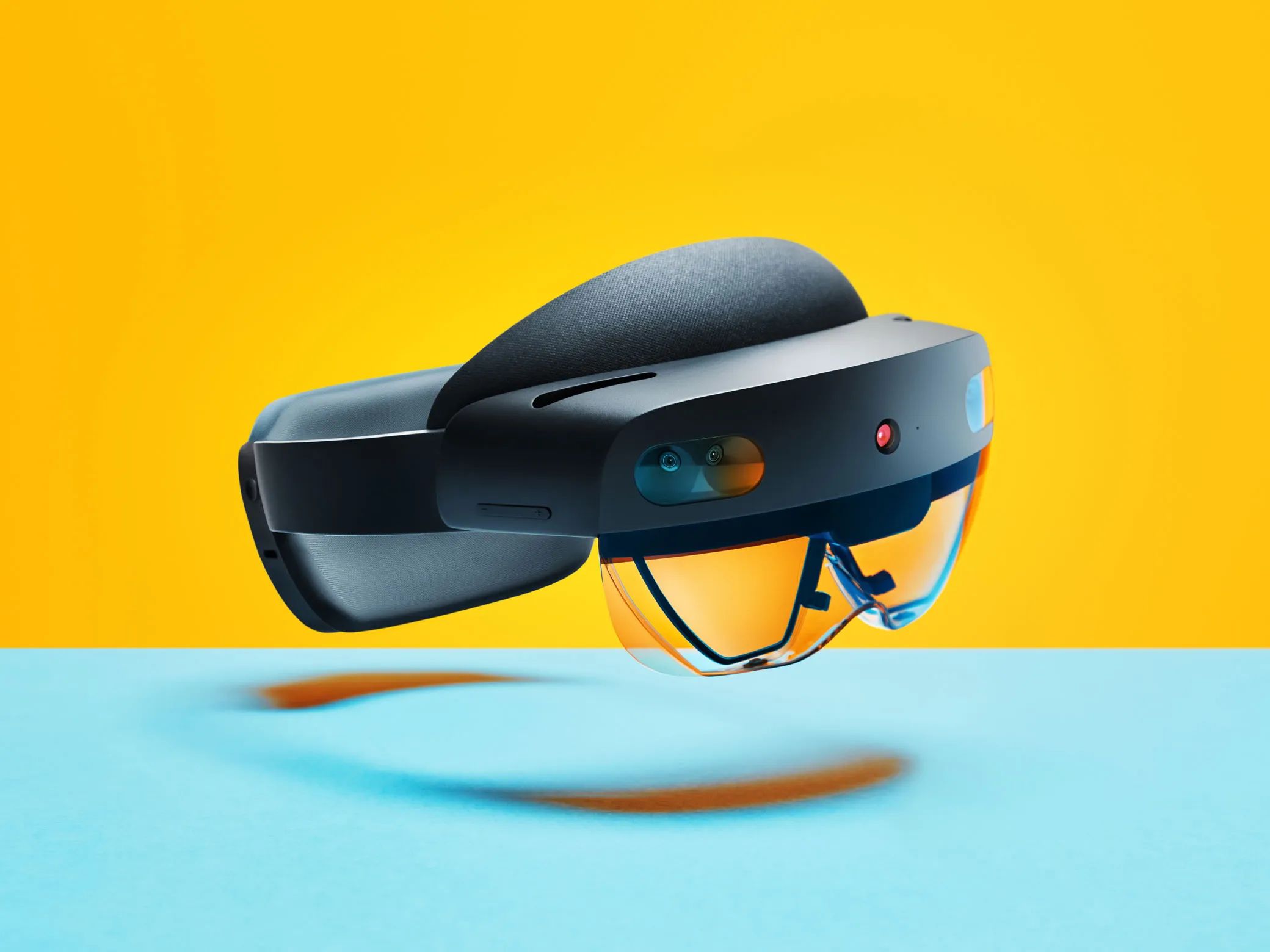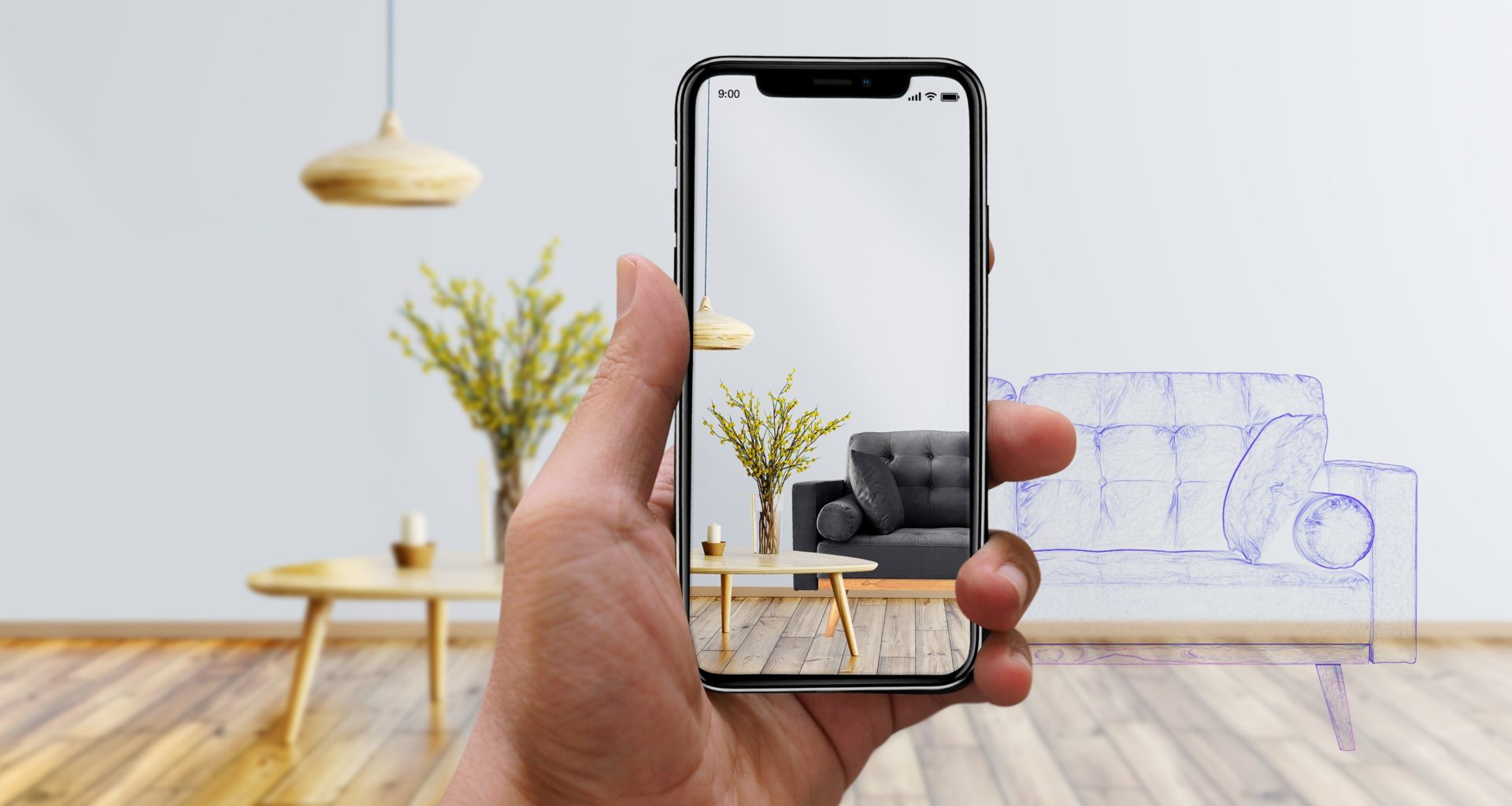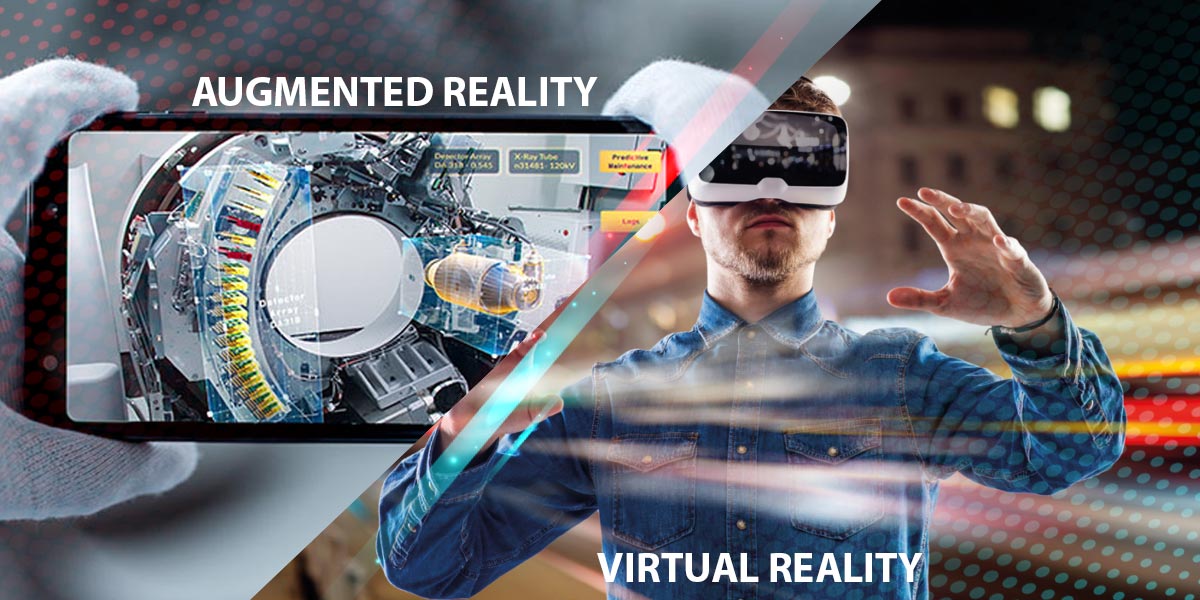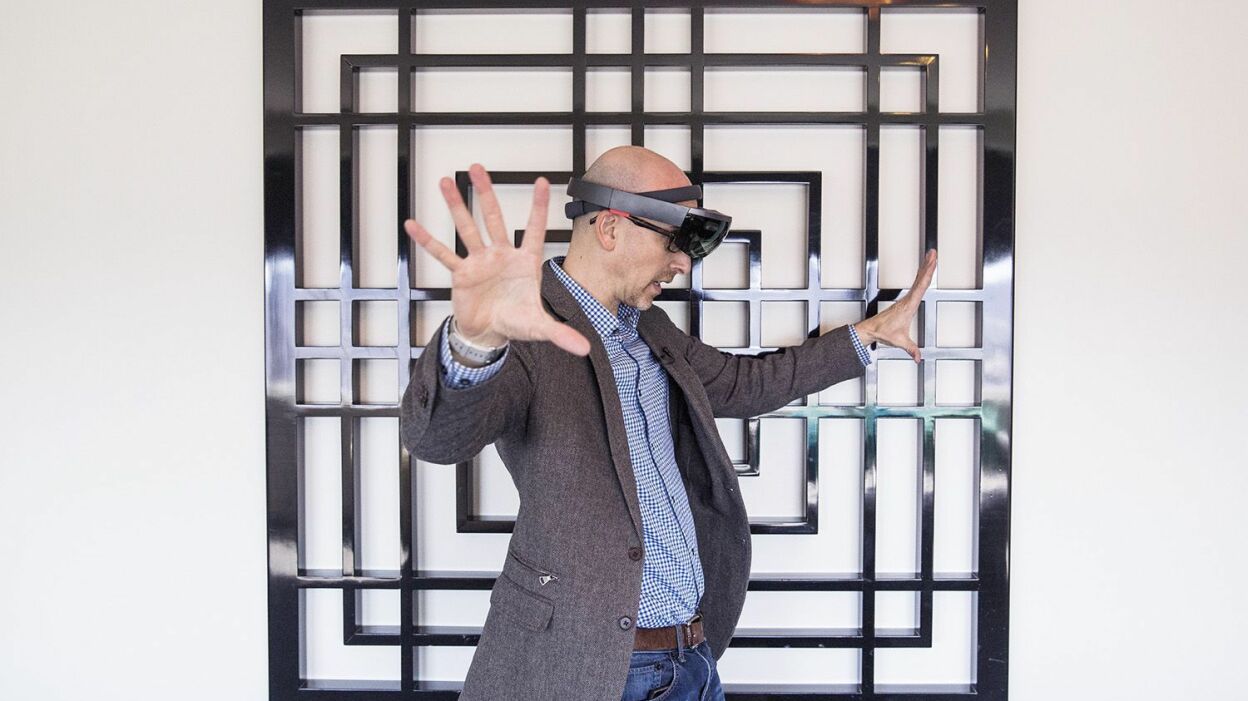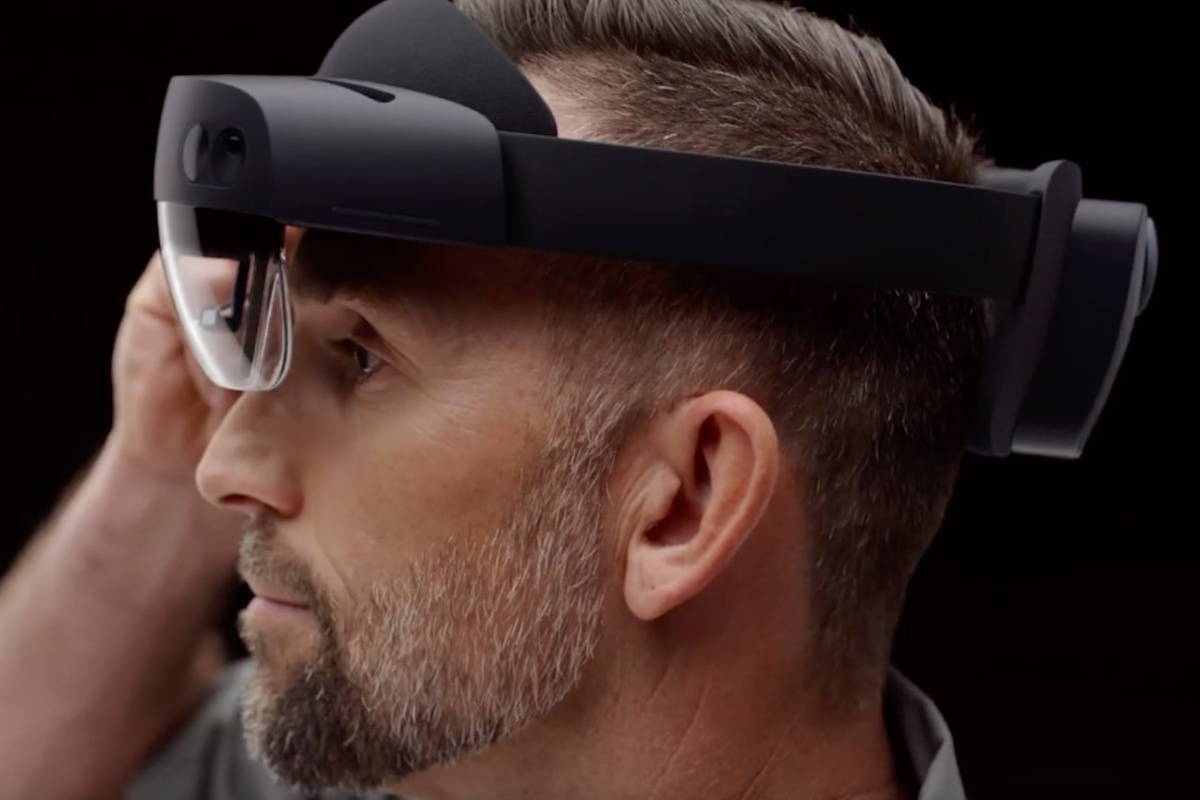Introduction
Welcome to the world of augmented reality in healthcare, where cutting-edge technology is revolutionizing the way medical professionals diagnose, treat, and educate patients. Augmented reality (AR) is a rapidly emerging technology that overlays virtual objects onto the real-world environment, providing an interactive and immersive experience.
AR has gained significant attention in recent years, thanks to its potential to bridge the gap between the physical and digital worlds. By blending computer-generated images, text, and sound with the real-world environment, AR enhances our perception and interaction with the world around us.
In the healthcare industry, AR is poised to make a significant impact, offering innovative solutions to various challenges and enhancing the quality of patient care. This technology holds immense promise in areas such as medical education, surgical planning, patient rehabilitation, telemedicine, and more.
With AR, healthcare professionals can visualize complex anatomical structures, simulate medical procedures, and guide patients through therapies, all in a highly interactive and engaging manner. The potential benefits of implementing AR in healthcare are vast, ranging from improved diagnosis accuracy and enhanced patient outcomes to increased efficiency and reduced healthcare costs.
However, like any emerging technology, AR also poses its own set of challenges and limitations. From technical hurdles and privacy concerns to limited accessibility and the need for specialized training, there are several factors that need to be addressed for the widespread adoption of AR in the healthcare sector.
In this article, we will explore the world of augmented reality in healthcare, delving into its definition, applications, benefits, challenges, and future prospects. Join us on this captivating journey as we unravel the exciting potential of AR in revolutionizing the healthcare landscape.
Definition of Augmented Reality
Augmented reality (AR) is a technological concept that combines real-world surroundings with digital content, creating an interactive and immersive experience. Unlike virtual reality (VR), which completely immerses users in a simulated environment, AR overlays virtual elements onto the real world, enhancing our perception of reality.
The key element of AR is the ability to seamlessly blend virtual objects, such as images, videos, and 3D models, with the user’s physical environment in real-time. This is achieved through the use of sensory input devices, such as cameras, sensors, and GPS, which capture and interpret the user’s surroundings.
By employing sophisticated algorithms and computer vision techniques, AR devices can recognize and track physical objects, allowing virtual content to interact with the real world. This interaction can be in the form of visual overlays, auditory feedback, or haptic sensations, creating a multisensory experience for the user.
AR can be experienced through various devices, including smartphones, tablets, smart glasses, and headsets. These devices provide users with a view of the real world, augmented with digital information, displayed either directly on the device’s screen or through wearable displays.
The applications of AR span across multiple industries, from entertainment and gaming to education and healthcare. In the context of healthcare, AR technology has the potential to revolutionize medical training, patient care, and clinical workflows.
By providing healthcare professionals with real-time visualizations of complex anatomical structures, AR can aid in accurate diagnosis, surgical planning, and intraoperative guidance. It can also facilitate medical education, allowing students to interact with virtual patients and simulate complex procedures in a controlled environment.
Overall, augmented reality offers a new dimension to our perception of reality, providing a powerful tool for enhancing human capabilities and transforming various industries, including healthcare, into more immersive and interactive domains.
How Does Augmented Reality Work
Augmented reality (AR) technology works by combining the real-world environment with virtual objects, creating an interactive and immersive user experience. The process of how AR works involves several key components and steps.
The first step in the AR process is capturing the real-world environment. This is done through sensory input devices such as cameras, sensors, and GPS. These devices collect information about the user’s surroundings, including images, videos, and spatial data.
The next step is the recognition and tracking of physical objects in the real world. This is achieved through computer vision algorithms that analyze the sensory input and identify objects based on shape, color, texture, or other features. By tracking these objects, AR devices can precisely overlay virtual content onto them.
Once the physical objects are recognized and tracked, the AR device can superimpose digital content onto them. This is done by rendering virtual objects, such as images, videos, or 3D models, and aligning them with the corresponding physical objects in real-time. The virtual content is then displayed to the user on the AR device’s screen or through wearable displays.
To ensure a seamless integration of virtual and real-world elements, AR devices employ techniques such as depth sensing, occlusion, and perspective correction. Depth sensing allows the device to understand the spatial relationships between objects, while occlusion ensures that virtual objects appear behind or in front of real objects correctly. Perspective correction adjusts the virtual content to match the user’s viewing angle, creating a realistic visual experience.
In addition to visual overlays, AR can also incorporate audio and haptic feedback. Audio cues, such as instructions or feedback, can be provided through speakers or headphones, enhancing the user’s immersion in the augmented environment. Haptic feedback, including vibrations or tactile sensations, can further enhance the user’s interaction with virtual objects.
AR devices can be classified into two main types: handheld devices, such as smartphones and tablets, and wearable devices, such as smart glasses and headsets. Handheld devices provide a view of the augmented environment through their screens, while wearable devices offer a more immersive experience by directly overlaying virtual content onto the user’s field of view.
Overall, the working principle of augmented reality involves the seamless integration of sensory input, object recognition, virtual content rendering, and user feedback. By combining these elements, AR technology creates a rich and interactive experience that enhances our perception and interaction with the world around us.
Applications of Augmented Reality in Healthcare
Augmented reality (AR) technology has a wide range of potential applications in the healthcare industry, offering innovative solutions to various challenges and enhancing patient care. Let’s explore some of the key areas where AR is making a significant impact.
Medical Education: AR has the potential to revolutionize medical education by providing interactive and immersive learning experiences. Students can use AR devices to visualize complex anatomical structures, simulate medical procedures, and practice surgical techniques in a safe and controlled environment. AR can also facilitate remote learning, enabling students to collaborate and learn from experts around the world.
Surgical Planning and Guidance: AR can assist surgeons in planning and performing complex surgeries. By overlaying patient-specific information, such as CT scans or MRI images, onto the surgical field, AR enables surgeons to visualize critical structures and develop precise surgical plans. During the surgery, AR can provide real-time guidance and feedback, improving surgical accuracy and reducing complications.
Rehabilitation and Physical Therapy: AR can enhance the rehabilitation process by providing interactive exercises and real-time feedback. With AR, patients can engage in virtual rehabilitation activities that simulate real-world scenarios while receiving guidance and support. This technology not only enhances patient motivation but also allows therapists to track progress and adjust treatment plans accordingly.
Medical Visualization: AR can improve medical visualization by overlaying patient data, such as lab results or vital signs, onto the patient’s body. This real-time information can help healthcare professionals make more informed decisions, monitor patient conditions, and provide personalized care. AR can also assist in visualizing complex medical concepts and explaining treatment plans to patients, improving health literacy and patient engagement.
Telemedicine: AR can play a vital role in telemedicine by enabling remote consultations and procedures. With the use of AR devices, healthcare professionals can interact with patients in real-time, visually examine them, and provide medical guidance. This technology reduces geographical barriers, improves access to healthcare, and enhances the efficiency of healthcare delivery.
Mental Health and Well-being: AR can be used in the field of mental health to create immersive and therapeutic environments. By simulating calming and relaxing scenarios, AR can help reduce anxiety, manage stress, and improve overall well-being. AR-based interventions can also be utilized for phobia treatment and cognitive behavioral therapy.
These are just a few examples of the vast range of applications that augmented reality offers in the healthcare industry. As technology continues to advance, we can expect to see even more innovative uses of AR that transform healthcare and improve patient outcomes.
Benefits of Augmented Reality in Healthcare
Augmented reality (AR) technology offers numerous benefits that have the potential to transform the healthcare industry. Let’s explore some of the key advantages that AR brings to healthcare professionals and patients alike.
Enhanced Visualization: AR provides healthcare professionals with enhanced visualization of medical information and anatomical structures. By overlaying virtual objects onto the real-world environment, AR can make complex medical images, such as CT scans or MRI images, more easily understandable. This improves diagnostic accuracy and enables healthcare professionals to make more informed decisions.
Improved Surgical Planning and Precision: AR assists surgeons in planning and performing complex surgeries with greater precision. By overlaying patient-specific data onto the surgical field, surgeons can accurately visualize critical structures and plan the procedure accordingly. During the surgery, AR can provide real-time guidance, reducing the risk of errors and complications.
Enhanced Medical Education: AR has the potential to revolutionize medical education by providing interactive and immersive learning experiences. Medical students can use AR devices to visualize complex anatomical structures, simulate medical procedures, and practice surgical techniques. This hands-on learning enhances comprehension and improves retention of knowledge.
Increased Patient Engagement and Education: AR can help patients better understand their medical conditions and treatment plans. By overlaying virtual information onto their own bodies, patients can visualize and comprehend complex medical concepts more easily. AR can also provide interactive educational content, empowering patients to take an active role in their healthcare journey.
Remote Collaboration and Telemedicine: AR enables remote collaboration among healthcare professionals, facilitating expert consultations and second opinions. Through AR devices, doctors can visualize patient data and provide real-time guidance to remote clinicians. AR can also enhance telemedicine by allowing healthcare professionals to visually examine patients remotely, improving access to care for underserved areas.
Efficient Workflow and Time Savings: AR can streamline clinical workflows by providing quick access to patient data and relevant information. By overlaying contextually relevant information onto the real-world environment, AR reduces the time spent on searching for information, enabling healthcare professionals to focus more on patient care.
Reduced Healthcare Costs: AR has the potential to reduce healthcare costs in various ways. By assisting in surgical planning and precision, AR can minimize the need for additional procedures or revisions, leading to cost savings. AR can also facilitate remote consultations, reducing the need for patients to travel, which can result in significant cost reductions.
These benefits demonstrate the transformative potential of augmented reality in healthcare. As AR technology continues to evolve, we can expect further advancements and innovations that will enhance patient care, improve outcomes, and revolutionize the healthcare industry as a whole.
Challenges and Limitations of Augmented Reality in Healthcare
While augmented reality (AR) holds immense potential in healthcare, there are several challenges and limitations that need to be addressed for its widespread adoption and effective implementation. Let’s explore some of the key challenges and limitations of AR in healthcare.
Technical Hurdles: AR technology relies heavily on hardware capabilities, such as processing power, display quality, and tracking accuracy. Overcoming technical limitations, optimizing device performance, and ensuring seamless integration of virtual and real-world elements remain significant challenges for AR developers and manufacturers.
Privacy and Security Concerns: The use of AR in healthcare involves capturing and processing sensitive patient data. Ensuring the privacy and security of patient information, including medical images and personal health records, is crucial. As AR devices become more integrated with patient care, robust security measures and strict adherence to privacy regulations are essential.
Training and Skill Development: Effective utilization of AR technology requires training and skill development for healthcare professionals. Understanding how to interpret and utilize augmented information in real-time clinical settings is crucial. Offering comprehensive training programs and resources to healthcare professionals is essential for the successful implementation of AR in healthcare.
Interoperability and Integration: As AR technology advances, interoperability and integration with existing healthcare systems and electronic health records (EHRs) become critical. Ensuring compatibility and seamless data exchange between AR devices and healthcare infrastructure can be complex due to different standards and platforms.
Limited Accessibility and Affordability: The widespread adoption of AR in healthcare may be hindered by limited accessibility and affordability. The cost of AR devices and associated software can be prohibitive, especially for smaller healthcare organizations or those in resource-constrained settings. Ensuring affordable access to AR technology is essential to democratize its benefits.
Ethical Considerations: The use of AR in healthcare raises ethical considerations regarding autonomy, patient consent, and the potential impact on the doctor-patient relationship. Addressing these ethical concerns and ensuring ethical guidelines for the use of AR technology are necessary for its responsible and ethical implementation in healthcare.
User Acceptance and Adoption: AR technology is still relatively new and may face resistance or hesitancy from both healthcare professionals and patients. Overcoming skepticism and promoting user acceptance of AR in healthcare require effective education, demonstration of value, and evidence-based validation of its benefits.
While AR in healthcare has its challenges and limitations, addressing these issues can pave the way for a future where AR becomes an integral part of healthcare delivery. As technology continues to advance and these challenges are overcome, augmented reality has the potential to transform various aspects of healthcare, improving patient outcomes, and enhancing the overall quality of care.
Examples of Augmented Reality in Healthcare
Augmented reality (AR) is already being implemented in various healthcare applications, showcasing its potential to enhance medical procedures, patient care, and medical training. Let’s explore some notable examples of AR in healthcare:
AccuVein: AccuVein is an AR device that helps healthcare professionals locate veins for blood draws and intravenous (IV) insertions. By projecting real-time images onto a patient’s skin, AccuVein enables healthcare providers to visualize the location of veins, improving accuracy and reducing discomfort for patients.
Surgical Planning and Navigation: AR is used in surgical planning and navigation to enhance precision and reduce risks. Surgeons can use AR to overlay preoperative imaging, such as CT scans or MRI images, directly onto the patient’s body during surgery, providing real-time guidance. This technology can aid in complex procedures, neurosurgeries, and minimally invasive surgeries.
Medical Education and Training: AR is transforming medical education and training by providing immersive learning experiences. Students can use AR applications, such as Complete Anatomy, to interact with 3D models of the human body, visualizing structures and performing virtual dissections. AR-based training simulations also allow healthcare professionals to practice complex procedures in a risk-free environment.
AR for Rehabilitation: AR is used in physical therapy and rehabilitation to engage patients and enhance their progress. Devices like the Jintronix Rehabilitation System utilize AR to create interactive exercises and tasks that simulate real-world movements. The system provides real-time feedback and progress tracking, aiding patients in their recovery journeys.
AR for Mental Health: AR is used in mental health treatments to create immersive and therapeutic experiences. AR applications like MindMaze’s MindMotionPRO combine physical and cognitive exercises with interactive environments, helping patients improve cognitive abilities and recover from conditions such as motor impairments and stroke-related disabilities.
Telemedicine and Remote Assistance: AR technology enables remote collaboration and assistance in telemedicine. Healthcare professionals can use AR devices to remotely examine patients, visualize medical data, and provide real-time guidance during consultations or emergencies. This technology improves access to specialized care, especially in underserved areas.
AR for Patient Education: AR applications like Insight Heart enable patients to visualize their own anatomical structures and medical conditions. By overlaying virtual representations onto the patient’s body, doctors can explain procedures more effectively, increasing patient understanding and engagement with their healthcare journey.
These examples highlight how augmented reality is being utilized across different healthcare domains, improving diagnostic accuracy, patient outcomes, and medical training. As AR technology continues to advance, we can expect to see even more innovative applications that enhance healthcare delivery and transform the patient experience.
Future of Augmented Reality in Healthcare
The future of augmented reality (AR) in healthcare looks promising, with advancements in technology and the potential for transformative impact. Here are some key areas where AR is expected to play a significant role in the future:
Advanced Surgical Visualization: AR has the potential to revolutionize surgical visualization by providing surgeons with real-time, high-resolution images overlaid onto the patient’s body. This can enable improved precision, reduced invasiveness, and enhanced outcomes in surgical procedures.
Remote Surgery and Expert Assistance: With the advancement of high-speed networks and real-time data transfer capabilities, AR can enable surgeons to perform procedures remotely with the assistance of experts located anywhere in the world. This can enhance access to specialized care and provide life-saving interventions in critical situations.
Wearable AR Devices: The future may see the development of AR devices that are seamlessly integrated into wearable technology, such as smart glasses or contact lenses. These devices can provide hands-free access to patient data, real-time guidance, and visual overlays, making healthcare delivery more efficient and reducing cognitive load for healthcare professionals.
AR-guided Rehabilitation: AR can continue to advance rehabilitation and physical therapy by providing interactive exercises, gamification, and real-time feedback. The integration of sensor technologies can enable precise tracking of movements, allowing for personalized rehabilitation programs tailored to individual patient needs.
AR-driven Telemedicine: Telemedicine is expected to continue to evolve with the incorporation of AR technology. AR devices can facilitate remote consultations and examinations, allowing healthcare professionals to visually examine patients in real-time. This can enhance access to healthcare, particularly in remote or underserved areas.
AR-enabled Medical Devices: The integration of AR into medical devices, such as ultrasound systems or endoscopes, can provide real-time visual overlays during procedures. This can assist healthcare professionals by improving accuracy, reducing complications, and offering enhanced visualization of internal structures.
Artificial Intelligence and AR Fusion: The combination of artificial intelligence (AI) and AR has the potential to revolutionize healthcare. AI algorithms can analyze patient data in real-time and provide augmented information to healthcare professionals during diagnosis, treatment planning, and decision-making processes. This fusion of AI and AR can enhance clinical decision support and improve patient outcomes.
These are just a few glimpses into the future of augmented reality in healthcare. As AR technology continues to advance, we can envision a healthcare landscape where AR seamlessly integrates with medical practice, revolutionizing patient care, enhancing medical education, and improving overall healthcare delivery.
Conclusion
Augmented reality (AR) has emerged as a revolutionary technology with immense potential in the healthcare industry. It offers innovative solutions to various challenges, enhancing patient care, medical education, and clinical workflows. The applications of AR in healthcare are vast, ranging from surgical planning and navigation to rehabilitation and patient education.
AR provides healthcare professionals with enhanced visualization, real-time guidance, and improved precision in medical procedures. It has the potential to transform medical education by providing immersive learning experiences and simulations. AR can also empower patients by improving their understanding of medical conditions and treatment plans, enhancing patient engagement and health literacy.
However, like any emerging technology, AR also faces challenges and limitations that need to be addressed. Technical hurdles, privacy concerns, training requirements, and cost considerations pose barriers to the widespread adoption of AR in healthcare. Overcoming these challenges requires collaboration among researchers, developers, healthcare professionals, and policymakers.
The future of augmented reality in healthcare is promising. Advancements in AR technology, including wearable devices and the integration of AI, have the potential to revolutionize healthcare delivery, improve patient outcomes, and enhance clinical decision-making. With the continued development and refinement of AR applications, we can expect to see even greater integration of AR into various facets of healthcare.
Overall, augmented reality has the potential to transform the healthcare landscape, enhancing the capabilities of healthcare professionals, improving access to care, and empowering patients to take an active role in their own health. As the technology continues to advance, it is crucial for stakeholders to work together to address challenges, ensure ethical implementation, and maximize the benefits that augmented reality can bring to the field of healthcare.










